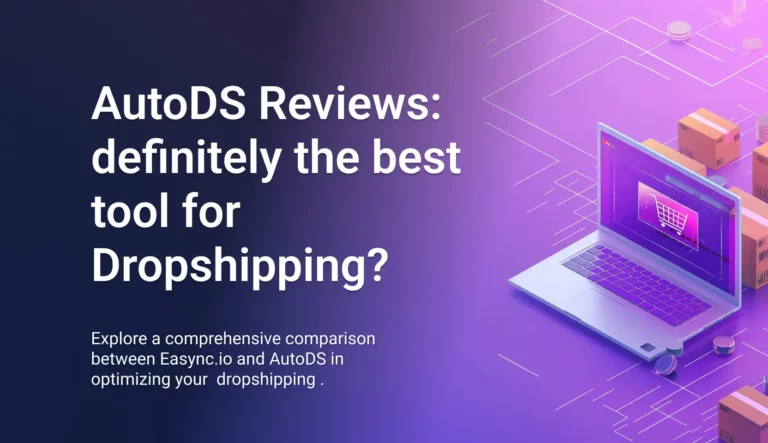Back in the day, both affiliate marketing vs dropshipping were somewhat niche. Now even your nerdy neighbor seems to have given a try to at least one of them.
Many people flooding the field has never been a good sign, especially if it has anything to do with e-commerce. This either spawns too many amateurs ruining the industry or, on the other hand, makes the competition hotter and stiffer, forcing one to adjust to the things they are not very pleased with.
Luckily, neither affiliate marketing nor dropshipping faces the decline for the time being. In fact, some could even claim the two spheres are on the rise. Now let’s get straight to the point and figure out if any of the two is worth a shot and how they compare with one another.
Dropshipping: Pros & Cons

In the 2022s, the dropshipping business is no longer a game for amateurs. The industry has grown into a large market that is estimated to be worth approximately $600 bn by 2025. These numbers signal that there are much more professionals now in the business than a few years ago. And with the rise of Shopify, which has made the dropshipping business mainstream, it’s going to be even more popular in years to come.
It goes without saying, though, that since the industry is much trickier and more professional now, you cannot just walk in without any knowledge and rely on nothing but hit-or-miss tactics and luck. To start a dropshipping business, you need to have a solid plan about:
- who your customers are;
- what they like;
- what you’re going to sell;
- who’s going to be your supplier and why;
- where you’re going to sell (as consumers from different countries may differ significantly in their needs).
To set off an in-demand dropshipping business, you need to take all that into account and think of what you can do to make people want to buy your products. At this point, you may fundamentally walk two ways:
1) come up with something exclusively fresh, entertaining, and innovative;
2) sell just the ordinary stuff lots of other stores do yet somehow better.
The first way is quite slimy, as you literally must understand the consumer’s motifs inside out. Remember all that hype around spinners all over the globe in the 2010s? Or Pop It? Who in the world would have thought those could end up being such hits? If anybody had come up to a professional dropshipper suggesting a few years ago to sell something of the kind, they would’ve merely laughed at you.
It’s utterly complex to predict what people will be obsessed with the very next season. Sometimes you offer them exceptionally well-designed products with friendly pricing, but instead, they just go past to grab a piece of what seems to be complete garbage for thousands of dollars.
Unless you have a team that can do research 24/7 in consumer behavior, you probably will wind up trying to sell the stuff just everybody does, such as clothes or consumer electronics. And here comes the issue:
Why should people choose you over other stores or even a dropshipper working solo? What makes your goods or services better?
In the 2022s, one cannot just, for instance, post pictures of T-shirts on Instagram and count money. Apart from having to find specific T-shirts that would make you stand out from other T-shirt sellers, you also need to work a lot on the services you’re going to provide.

Let’s imagine you’ve decided on selling T-shirts with memes. That’s probably not a bad idea. Now ask yourself: who is your target audience? Very likely teenagers and young adults — 15-30-year-old zoomers and millennials surfing the Internet. Given that this information is indeed valid, you’ll probably at the very least want to do the following things:
- create and manage TikTok and Instagram accounts (as this age group spends a lot of their online time on these platforms);
- constantly produce exhilarating content, playing around new trends;
- always be on the lookout for new memes and upgrade the design of your T-shirts;
- provide customer support service directly on those platforms or on trendy messengers, such as Signal or Telegram (again, this group age does not enjoy talking on the phone).
This list, of course, goes on way further and depends on lots of different variables. Not to mention, you also have to decide on what quality and tone of voice your business is to adopt. Is it going to be cheap and affordable yet at the expense of quality or pricey yet outstandingly fashionable and high quality? And in both cases, you will be very much dependent on your supplier, so you’d better find one you 100% trust.
As you can see, dropshipping doesn’t simply mean getting the product from the supplier to the consumer. A good dropshipper does many things at the same time, and the requirements are versatile and high — one has to be able to:
- analyze the market;
- understand consumer behavior;
- communicate both with the supplier and customers (and both require different communication strategies);
- create good content;
- advertise products;
- and many other, by the way, risk-taking things.
In spite of the fact that some may find it complicated, dropshipping does pay off a lot, having tons of advantages over many other businesses:
- no need to have a big budget;
- pretty low risks (all you have to do is pay for a product as soon as you receive an order);
- you’re the one who’s setting prices, leading to you controlling your entire income;
- despite being a bit too dependent on your suppliers, you can actually make up your own brand and even hire them up as part of your team in the future.
Fueled with enough ambition, you’ll find only a couple of real disadvantages, though:
- need to organize customer support services;
- initially no control over the quality of the stuff you’re going to be selling;
- need to compete with a lot of people that use cutting-edge technologies, including automation.
Yet, the first two are entirely up to your competence. If you at least know what decent customer support is and are good at communicating with people, it shouldn’t be a problem. As for automating your business — there’s a solution as well: easync will handle that for you.
Affiliate Marketing: Pros & Cons

Regardless of all the hardships a dropshipper may face, running an affiliate marketing business is not much easier. Although the skillset might not be as diverse, it does involve more specialized knowledge of search engine marketing, email marketing, content marketing, SEO, and advertising.

When doing affiliate marketing, you most of the time recommend products and/or services from other businesses (not yours) to either your audience or partner platforms where you can set up your ads. The undeniable pros compared to dropshipping is that:
- it’s easier to get started;
- no need to provide any customer support services;
- less responsibility.
And… that’s it. Seriously — affiliate marketing comes with many disadvantages. You may end up working with payers having extremely low commissions. You’ll also have very little to no control over the pricing. On top of that, if it’s your own website, you’re always technically sending your audience away to someone else, which potentially might cut down on your traffic. Not that it’s worse than dropshipping, but in the grand scheme of things, it’s easier to do but has more potential risks and is slightly less profitable.
Not that affiliate marketing is worse than dropshipping, but in the grand scheme of things, it’s easier to do but has more potential risks and is slightly less profitable.
Affiliate Marketing vs. Dropshipping

There’s a huge difference between dropshipping vs affiliate marketing despite the two slightly resembling each other in involving you as a middleman between the partner/supplier and the end customer. Although it varies from one team to another, the dropshipper in many ways reminds of the entrepreneur, whereas affiliate marketing more stands for you advertising things that are not necessarily yours.
In other words, a dropshipper is often not just a freelancer but rather a businessman running a company.
So, when it comes to the comparison between dropshipping and affiliate marketing, it all boils down to a couple of things:
- With affiliate marketing, you have a bit less responsibility, which might make the process slightly more relaxing and laid-back. However, you won’t be able to set prices yourself, so it’ll be harder for you to make a really big profit.
- When doing affiliate marketing, there’s no need to bother about customer support, since everything will be all handled by the merchant. Neither should you worry about many other things, such as the quality of products and logistics — it’s all the merchant’s responsibility.
- When dropshipping, you are basically slowly, very much relying on third-party supplies, yet building up your own brand. This means that eventually you may have your own online shop with regular customers. With affiliate marketing, you often help other businesses to grow.
At the end of the day, it all comes down to your own aptitude, skillset, motivation, and interests. If you’re up for something like running your own business, dropshipping will sure be a better pick. If you want less responsibility and less stressful work — affiliate marketing, perhaps, just suits you more. Or…
Dropshipping + Affiliate Marketing
Have you ever thought of combining dropshipping and affiliate marketing? Not only does such a strategy expedite your dropshipping business, but it also potentially gives you more insights into how other people run their companies, as you’ll certainly have to cooperate with more people when doing affiliate marketing.
You can both promote your dropshipping store and companies that do not interfere with your interests. This will help you learn a lot about different approaches and draw up a long list of useful contacts across the industries. And once you grow big enough to seriously scale, with tools such as easync, you can automate your businesses, turning it all into a stable, big source of passive income.


